Philipp Geuer
Indoor Sensing with Measurements
Sep 01, 2024



Abstract:The cellular wireless networks are evolving towards acquiring newer capabilities, such as sensing, which will support novel use cases and applications. Many of these require indoor sensing capabilities, which can be realized by exploiting the perturbation in the indoor channel. In this work, we conduct an indoor channel measurement campaign to study these perturbations and develop AI-based algorithms for estimating sensing parameters. We develop several AI methods based on CNN and tree-based ensemble architectures for sensing. We show that the presence of a passive target like a person can be detected from the channel perturbation of a single link with more than 90 % accuracy with a simple CNN based AI algorithm. However, sensing the position of a passive target is far more challenging requiring more complex AI algorithms and deployments. We show that the position of the human in the indoor room can be estimated within the average position error of 0.7 m with a deployment having three links and employing complex AI architecture for position estimation. We also compare the results with the baseline algorithm to demonstrate the utility of the proposed method.
Bi-Static Sensing in OFDM Wireless Systems for Indoor Scenarios
Mar 07, 2024Abstract:The sixth generation (6G) systems will likely employ orthogonal frequency division multiplexing (OFDM) waveform for performing the joint task of sensing and communication. In this paper, we design an OFDM system for integrated sensing and communication (ISAC) and propose a novel approach for passive target detection in an indoor deployment using a data driven AI approach. The delay-Doppler profile (DDP) and power delay profile (PDP) is used to train the proposed AI-based detector. We analyze the detection performance of the proposed methods under line of sight (LOS) and non-line of sight (NLOS) conditions for various training strategies. We show that the proposed method provides 10 dB performance improvement over the baseline for 80% target detection under LOS conditions and the performance drops by 10-20 dB for NLOS depending on the usecase scenarios.
The Story of QoS Prediction in Vehicular Communication: From Radio Environment Statistics to Network-Access Throughput Prediction
Feb 23, 2023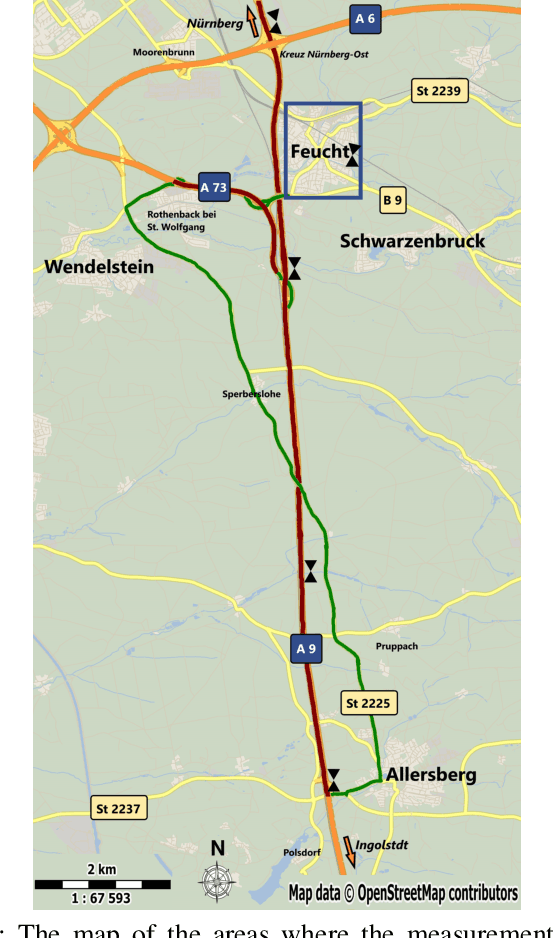
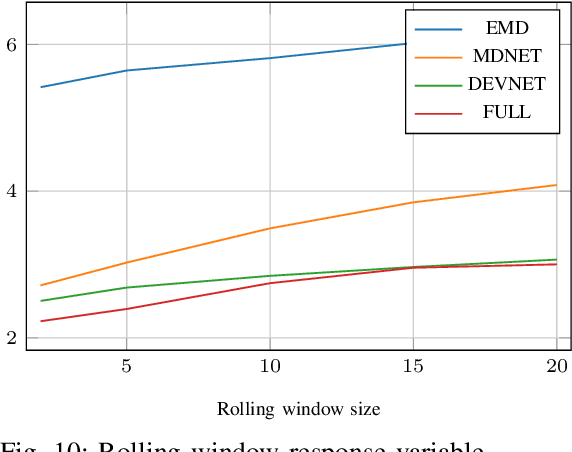
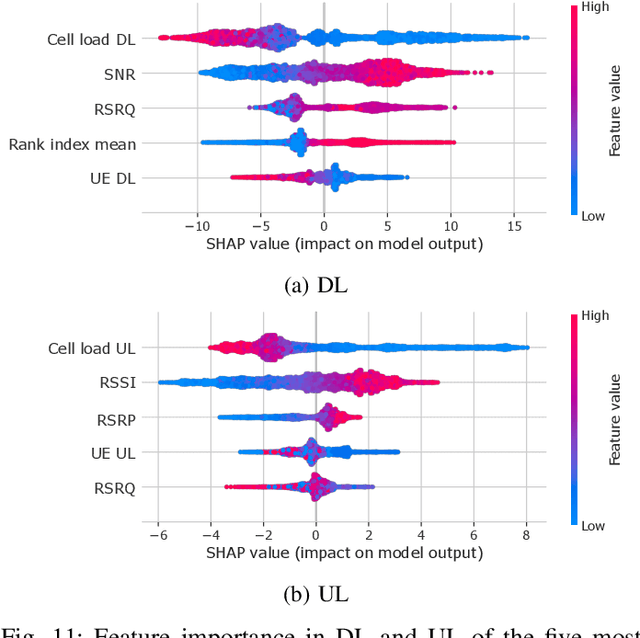
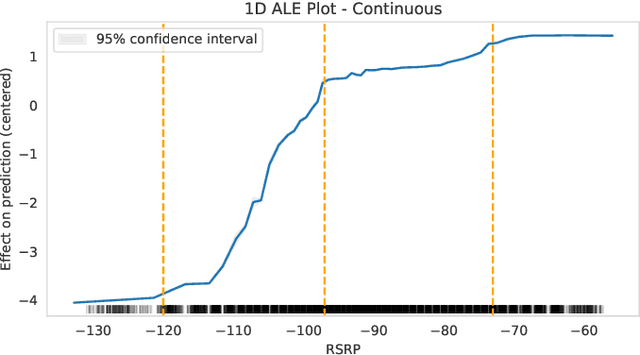
Abstract:As cellular networks evolve towards the 6th Generation (6G), Machine Learning (ML) is seen as a key enabling technology to improve the capabilities of the network. ML provides a methodology for predictive systems, which, in turn, can make networks become proactive. This proactive behavior of the network can be leveraged to sustain, for example, a specific Quality of Service (QoS) requirement. With predictive Quality of Service (pQoS), a wide variety of new use cases, both safety- and entertainment-related, are emerging, especially in the automotive sector. Therefore, in this work, we consider maximum throughput prediction enhancing, for example, streaming or HD mapping applications. We discuss the entire ML workflow highlighting less regarded aspects such as the detailed sampling procedures, the in-depth analysis of the dataset characteristics, the effects of splits in the provided results, and the data availability. Reliable ML models need to face a lot of challenges during their lifecycle. We highlight how confidence can be built on ML technologies by better understanding the underlying characteristics of the collected data. We discuss feature engineering and the effects of different splits for the training processes, showcasing that random splits might overestimate performance by more than twofold. Moreover, we investigate diverse sets of input features, where network information proved to be most effective, cutting the error by half. Part of our contribution is the validation of multiple ML models within diverse scenarios. We also use Explainable AI (XAI) to show that ML can learn underlying principles of wireless networks without being explicitly programmed. Our data is collected from a deployed network that was under full control of the measurement team and covered different vehicular scenarios and radio environments.
Towards an AI-enabled Connected Industry: AGV Communication and Sensor Measurement Datasets
Jan 10, 2023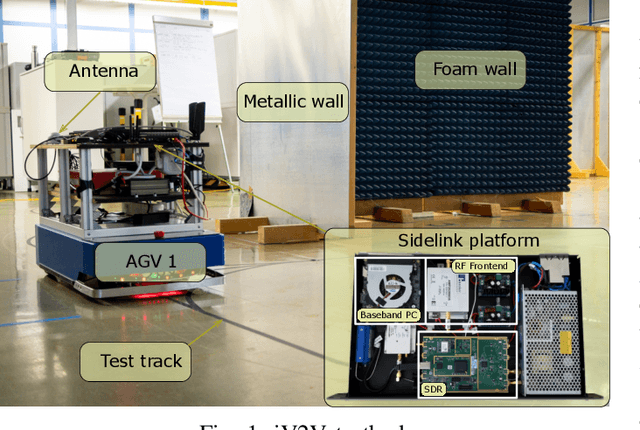
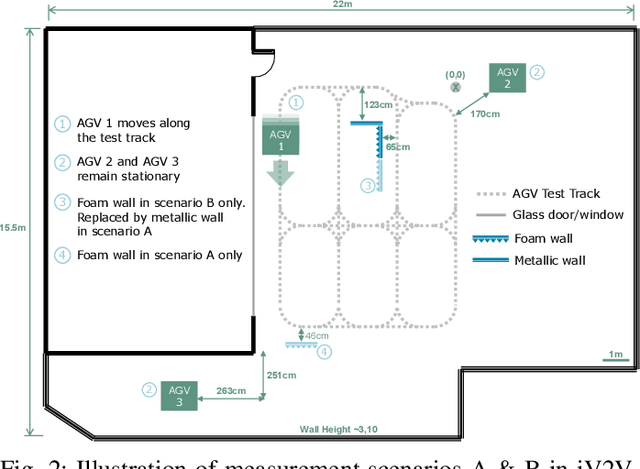
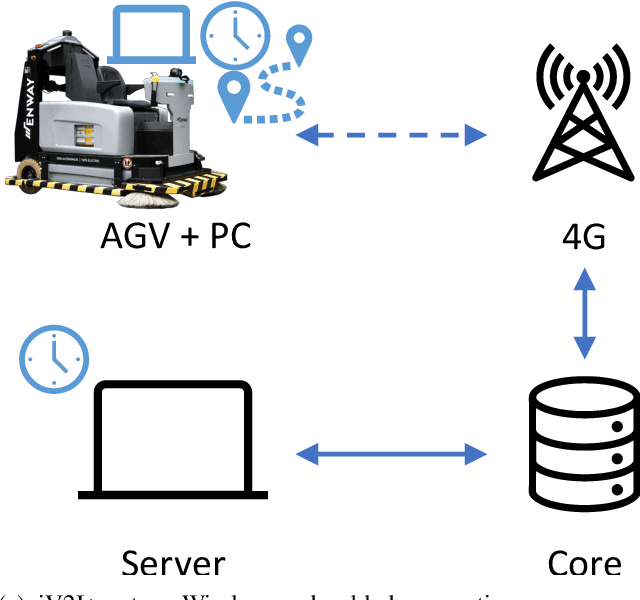
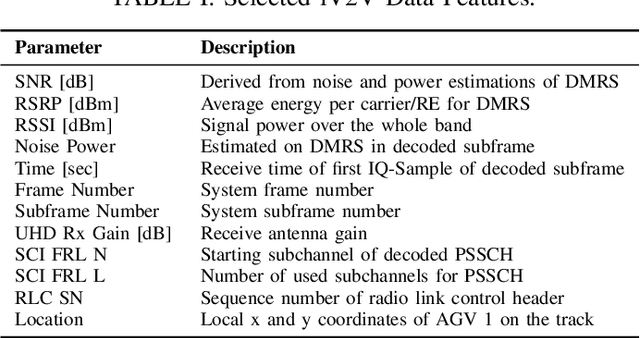
Abstract:This paper presents two wireless measurement campaigns in industrial testbeds: industrial Vehicle-to-vehicle (iV2V) and industrial Vehicle-to-infrastructure plus Sensor (iV2I+). Detailed information about the two captured datasets is provided as well. iV2V covers sidelink communication scenarios between Automated Guided Vehicles (AGVs), while iV2I+ is conducted at an industrial setting where an autonomous cleaning robot is connected to a private cellular network. The combination of different communication technologies, together with a common measurement methodology, provides insights that can be exploited by Machine Learning (ML) for tasks such as fingerprinting, line-of-sight detection, prediction of quality of service or link selection. Moreover, the datasets are labelled and pre-filtered for fast on-boarding and applicability. The corresponding testbeds and measurements are also presented in detail for both datasets.
Berlin V2X: A Machine Learning Dataset from Multiple Vehicles and Radio Access Technologies
Dec 21, 2022Abstract:The evolution of wireless communications into 6G and beyond is expected to rely on new machine learning (ML)-based capabilities. These can enable proactive decisions and actions from wireless-network components to sustain quality-of-service (QoS) and user experience. Moreover, new use cases in the area of vehicular and industrial communications will emerge. Specifically in the area of vehicle communication, vehicle-to-everything (V2X) schemes will benefit strongly from such advances. With this in mind, we have conducted a detailed measurement campaign with the purpose of enabling a plethora of diverse ML-based studies. The resulting datasets offer GPS-located wireless measurements across diverse urban environments for both cellular (with two different operators) and sidelink radio access technologies, thus enabling a variety of different studies towards V2X. The datasets are labeled and sampled with a high time resolution. Furthermore, we make the data publicly available with all the necessary information to support the on-boarding of new researchers. We provide an initial analysis of the data showing some of the challenges that ML needs to overcome and the features that ML can leverage, as well as some hints at potential research studies.
 Add to Chrome
Add to Chrome Add to Firefox
Add to Firefox Add to Edge
Add to Edge